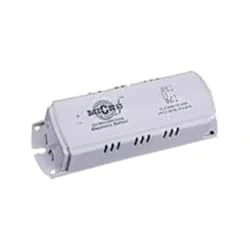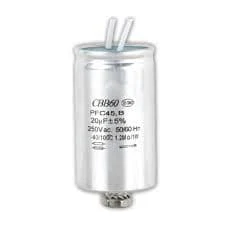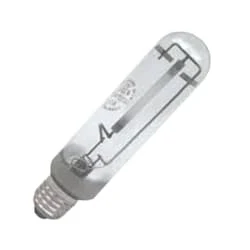Mercury Vapour Lamp Connection | Mercury vapour lamp
Mercury Vapour Lamp Connection:
This diagram shows how to connect a mercury vapor lamp connection. In this circuit diagram, we describe how to connect an HPMV lamp with an ignitor, copper ballast, and capacitor. In this circuit diagram, we use an HPMV lamp, a capacitor, an ignitor, and an electric copper ballast. If you want to clear details about this diagram connection please check our youtube video link below the post.
Diagram of Mercury Vapour Lamp Connection wiring:
Components Need for this Project:
You can get the components from any of the sites below:
- Copper Ballast [See Buy Click Amazon]
- Capacitor [See Buy Click Amazon]
- Ignitor [See Buy Click Amazon]
- HPMV Lamp [See Buy Click Amazon]
*Please note: These are affiliate links. I may make a commission if you buy the components through these links. I would appreciate your support in this way!
$ads={1}Read Also:
Components used to make the Mercury Vapour Lamp Connection:
01. Copper Ballast
 |
| Fig 2: Copper Ballast |
A Copper Ballast is a device placed in a series With a Load to limit The amount Of current In An Electrical Circuit. A Familiar and would otherwise rise to a Destructive level due to the negative differential resistance of the Tube's Voltage-Current Characteristic Widely used example is the inductive ballast used In Fluorescent Lamps To Limit The Current through The Tube, which. Ballasts Vary Greatly in Complexity. They may be as simple as a Resistor, Inductor, or Capacitor Wired in a Series With The Lamp.
02. Capacitor
 |
| Fig 3: Capacitor |
A capacitor is basically an electric charge storage device or an electrical passive device that can store charge. Its Bengali meaning is "container" which means that holds an electric charge. And the device made by separating the two plates by placing a non-conductive material (Dielectric) between the two conductive plates is called a capacitor. A capacitor consists of a dielectric material between two conductive layers. A capacitor in a circuit stores electrical energy or charge from a source. Another popular name is a condenser.
03. Ignitor
 |
| Fig 4: Ignitor |
An ignitor is a Starting Device that Generates Voltage Pulses to Start a Discharge Lamp. Lighting Ignitors Provide a Brief, High-Voltage Pulse To Ignite The Gases Inside Lamps. An e-Match or Igniter is an Electrical device Used to Trigger Pyro Compounds and Is Widely Professionally used in Pyrotechnical Displays. Also allows you to light things in a quick Sequence, Using these Igniters Allows you to be far Away When you Want to light off Fireworks or Other Things, Making Your Fireworks look more Professional.
04. HPMV Lamp
 |
| Fig 5: HPMV Lamp |
HPMV lamps are Economic Discharge Lamps with Moderate Luminous Efficacy and life. The White Appearance of HPMV Lamps With Their Lower Cost Makes them the Preferred choice for Various outdoor and indoor usages. HPMV Lamps are used for lighting secondary roads, car parking areas, parks and gardens, factory sheds, etc. A gas Discharge Lamp that Uses an Electric arc Through the Vaporized Mercury to Produce light is known as a Mercury Vapor Lamp. The operation of the Mercury vapor lamp is based on the Excitation of atoms of some gaseous Medium. Also, the Frequency and the Wavelength of the Radiation Given out by Different Atoms of the Gaseous Medium Depend Upon the Level of Their Excitation.
Thank You for visiting the website. Keep visiting for more Updates
$ads={2}
Frequently Asked Questions
What voltage is a mercury vapor light?
The operating voltage of the mercury of the lamp typically ranges from 100 to 600 volts, depending on the specific type of lamp and its design. Mercury vapor lamps are commonly used for outdoor and industrial lighting. A mercury-vapor lamp is a discharge of the lamp in which mercury is used for the production of visible light.
What are the components of a mercury Vapour lamp?
The ultrahigh-pressure of the mercury vapor lamp adopts a gradient heterogeneous material prepared from metallic copper (Cu) metallic molybdenum (Mo) or quartz (SiO2). The heterogeneous on the part is inserted into a tungsten (W) wire to work as an electrode of the lamp.
What is the main disadvantage of mercury vapor lamps?
Disadvantages. Except for incandescents they are an inefficient source of light, with an efficacy in the 25 - 55 lumens per watt range. Mercury lamps may be greatly affected by lamp lumen depreciation and should be replaced after 24,000 hours. Poor lumen maintenance compared to other HID sources.
What are the applications of mercury vapor lamps?
Mercury vapor lamps have been used as outdoor lighting for streets and parking lots or have also been used as indoor lighting in factories or gymnasiums. They are much more energy efficient than incandescent lamps or have a much longer life.
Why is mercury in lamps?
Mercury is an essential element in the operation of fluorescent lighting; it allows the bulbs to be an efficient light source. Because CFLs contain trace amounts of mercury, it is important to educate yourself on proper use, recycling and disposal of these products.






Post a Comment
Do leave your comments